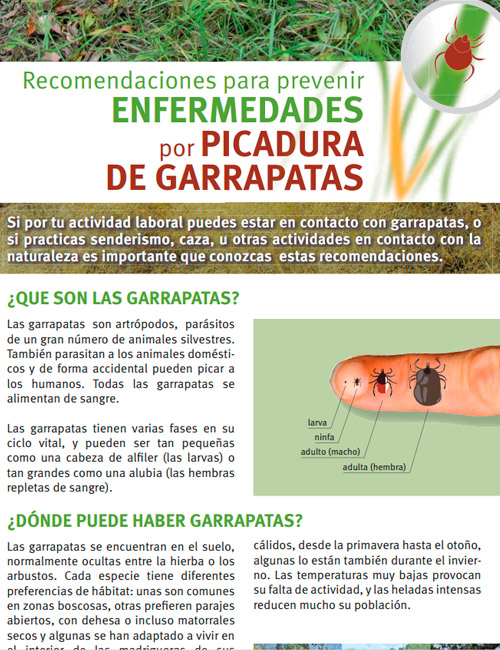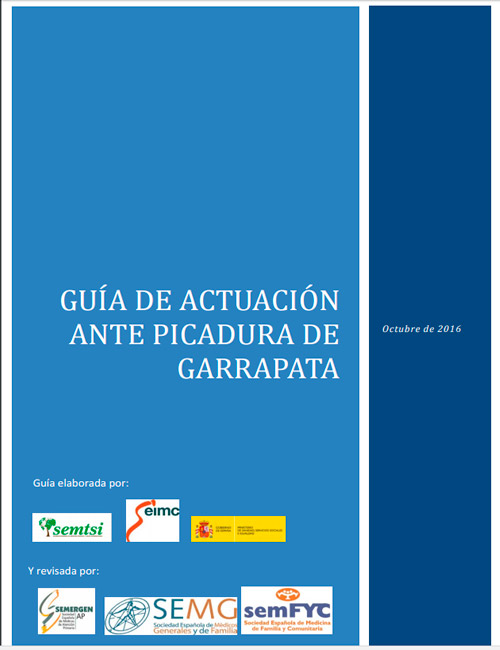[fusion_builder_container hundred_percent=»yes» overflow=»visible»][fusion_builder_row][fusion_builder_column type=»1_1″ background_position=»left top» background_color=»» border_size=»» border_color=»» border_style=»solid» spacing=»yes» background_image=»» background_repeat=»no-repeat» padding=»» margin_top=»0px» margin_bottom=»0px» class=»» id=»» animation_type=»» animation_speed=»0.3″ animation_direction=»left» hide_on_mobile=»no» center_content=»no» min_height=»none»][fusion_text]“La Consejería de Sanidad de la Comunidad de Madrid ha enviado para su difusión una nota informativa y dos guías con recomendaciones, con motivo de la detección de garrapatas transmisoras de la Fiebre Hemorrágica Crimea-Congo (FHCC) en cuatro Comunidades Autónomas: Extremadura, Castilla-La Mancha, Castilla y León y Comunidad de Madrid.
Aunque el riesgo de aparición de casos continúa siendo bajo, no se puede descartar el que aparezca algún caso esporádico, y la mejor manera de prevenir las enfermedades transmitidas por garrapatas, es evitar su picadura.
Por este motivo, se han elaborado las guías de “Recomendaciones para prevenir enfermedades producidas por picaduras de garrapatas” y “Guía de actuación ante picadura de garrapata”, para que la población esté informada de las medidas preventivas a observar cuando por sus aficiones como salidas al campo, practicar senderismo, o actividades con contacto con la naturaleza o por su labor profesional (ganaderos, pastores, trabajadores forestales, veterinarios, etc.), pudieran estar en contacto con garrapatas o con animales infectados”
Nota informativa de la Comunidad de Madrid[/fusion_text][/fusion_builder_column][fusion_builder_column type=»1_2″ last=»no» spacing=»yes» center_content=»no» hide_on_mobile=»no» background_color=»» background_image=»» background_repeat=»no-repeat» background_position=»left top» hover_type=»none» link=»» border_position=»all» border_size=»0px» border_color=»» border_style=»» padding=»» margin_top=»» margin_bottom=»» animation_type=»» animation_direction=»» animation_speed=»0.1″ animation_offset=»» class=»» id=»»][fusion_imageframe lightbox=»no» gallery_id=»» lightbox_image=»» style_type=»none» hover_type=»none» bordercolor=»» bordersize=»0px» borderradius=»0″ stylecolor=»» align=»none» link=»http://www.madridsalud.es/pdfs/prevencion_garrapatas.pdf» linktarget=»_self» animation_type=»0″ animation_direction=»down» animation_speed=»0.1″ animation_offset=»» hide_on_mobile=»no» class=»» id=»»] 


